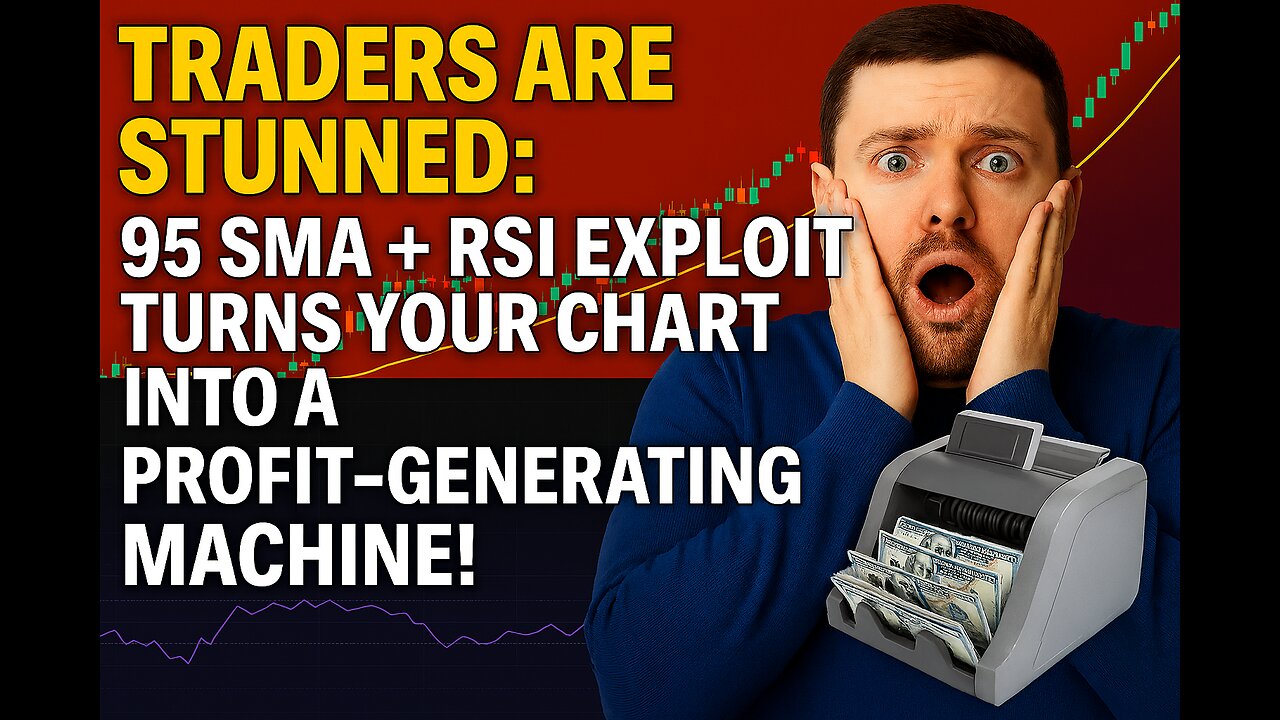Premium Only Content

OTC STOCK TRADERS ARE STUNNED: 95 SMA + RSI Exploit Turns Charts Into A PROFIT-GENERATING MACHINE!
Trading using the 95-period Simple Moving Average (SMA) and the Relative Strength Index (RSI) is a powerful strategy for identifying long-term trends and potential reversal points in the market. The 95 SMA acts as a dynamic support or resistance level, offering a clear view of the prevailing trend direction over an extended timeframe. Traders often look for price to bounce off the 95 SMA in trending markets or break through it to signal a potential shift. Combining this with RSI provides an added layer of confirmation, especially when looking for entries during retracements or overbought/oversold conditions.
Open A FREE Demo Account: https://globaloptioncapital.com
The Relative Strength Index, a momentum oscillator, helps traders measure the speed and magnitude of price movements. When used alongside the 95 SMA, the RSI becomes a confirmation tool to identify whether a trend is losing steam or gaining momentum. For instance, if the price is above the 95 SMA (indicating a bullish trend) and the RSI pulls back to the 30–40 zone before turning up, it may signal a prime buy-the-dip opportunity. On the flip side, if the price is below the 95 SMA and RSI rises to the 60–70 range before reversing, traders may look for short-selling setups in a confirmed bearish trend.
This combination strategy works well in both swing trading and position trading scenarios. It allows traders to filter out market noise and focus on high-probability setups backed by both price trend and momentum. With proper risk management and disciplined execution, using the 95-period SMA and RSI together can help traders build consistency and confidence in their decision-making. Whether you're trading forex, stocks, or crypto, this method offers a reliable framework for navigating volatile markets with clarity and precision.
Open A FREE Demo Account: https://globaloptioncapital.com
Money Management:
It is important to follow up with this strict rule of investment:
If you have $100 in your account, each open position should be $5 tops
If you have $200 in your account, each open position should be $10 tops
If you have $500 in your account, each open position should be $25 tops
If you have $1,000 in your account, each open position should be $50 tops
If you have $2,000 in your account, each open position should be $100 tops
If you have $5,000 in your account, each open position should be $250 tops
We're currently in our 13th year helping traders become successful in the live markets so we know a thing or two about leveraging a small account into serious wins.
Risk Disclaimer:
Trading options involves financial risk and may not be appropriate for all investors. The information presented here is for information and educational purposes only and should not be considered an offer or solicitation to buy or sell any financial instrument. Any trading decisions that you make are solely your responsibility. Past performance is not necessarily indicative of future results.
-
 8:04
8:04
Forex Partners
5 days agoThe Ultimate OsMA + 5 SMMA + 3 SMMA Trading Strategy | Catch Trend Reversals with Precision!
172 -
 LIVE
LIVE
The Big Mig™
2 hours agoWhat To Give The Man Who Has EVERYTHING!
135 watching -
 LIVE
LIVE
Benny Johnson
1 hour agoSHOCK: Massive Food Stamp FRAUD Exposed: 59% of Welfare are Obese Illegal Aliens!? Americans RAGE…
4,952 watching -
 LIVE
LIVE
Wendy Bell Radio
6 hours agoAmerica Deserves Better
7,165 watching -
 22:01
22:01
DEADBUGsays
2 hours agoDEADBUG'S SE7EN DEADLY HALLOWEENS
4.49K1 -
 LIVE
LIVE
Total Horse Channel
12 hours ago2025 IRCHA Derby & Horse Show - October 31st
55 watching -
 1:10:29
1:10:29
Chad Prather
14 hours agoStanding Holy in a Hostile World
44.9K27 -
 1:04:43
1:04:43
Crypto Power Hour
13 hours ago $9.86 earnedCrypto Price Swings Explained — What Every Investor Needs to Know
45.9K7 -
 21:31
21:31
Clownfish TV
23 hours agoOG YouTube is Officially ENDING! Employees Offered BUYOUTS?! | Clownfish TV
21.6K33 -
 5:54
5:54
Gun Owners Of America
20 hours agoThe Virginia Election Could Shift The Balance of Power Nationwide
29.9K5